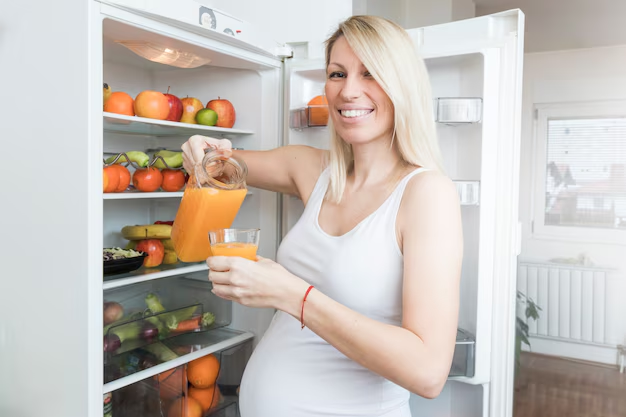🚀 What Temperature Should Your Refrigerator and Freezer Be Set At?
Properly storing food and beverages is a cornerstone of household management, often overlooked until something goes wrong. Ensuring your refrigerator and freezer are set to the correct temperatures is crucial for food safety, energy efficiency, and the longevity of your appliances. In this comprehensive guide, we’ll explore the optimal temperatures, the reasons behind these recommendations, and how to maintain them effectively.
🌡️ Optimal Temperatures for Your Refrigerator and Freezer
When it comes to setting the correct temperature for your refrigerator and freezer, it might seem simple, but there’s more than meets the eye.
The Magic Numbers: What Are They?
Refrigerator:
- Ideal Temperature: 37°F (3°C)
- Acceptable Range: 35°F to 38°F (1.7°C to 3.3°C)
Freezer:
- Ideal Temperature: 0°F (-18°C)
- Acceptable Range: -5°F to 0°F (-20.5°C to -18°C)
These temperatures are universally recommended to ensure food safety and energy efficiency. A temperature set higher or lower than these ranges can have impacts that range from mild to significant.
Why These Temperatures?
Maintaining these temperatures is not about guesswork; there are specific reasons informed by science and industry standards:
- Food Safety: Both pathogens and spoilage microorganism growth are inhibited in colder environments. By keeping your refrigerator at or below 40°F (4°C), you significantly reduce the risk of foodborne illnesses.
- Energy Efficiency: Appliances work harder and consume more energy at extreme temperatures. Keeping them within the recommended range optimizes performance and minimizes unnecessary energy expenditure.
- Food Quality and Longevity: Freezers at colder settings can lengthen the storage life of frozen goods by preventing freezer burn and maintaining texture and taste.
📊 How to Check and Adjust Your Appliance’s Temperature
While the above temperatures are the definitive guide, ensuring your appliance actually operates consistently within this range requires a bit of diligence.
Simple Steps for Temperature Check
- Purchase a Reliable Thermometer: Place it in a central location inside the refrigerator or freezer for an accurate reading.
- Wait and Measure: Allow the thermometer to sit in the appliance for 24 hours for a true reading.
- Read the Temperature: Ensure the reading falls within the desired range. Adjust if necessary.
Adjusting the Temperature
- Locate the Control: Most refrigerators have a dial or digital setting within the main compartment. Simply adjust this setting following the manufacturer's guide.
- Re-evaluate After Adjustment: After adjusting, let the appliance run for several hours before checking the temperature again to confirm it's stable.
🔍 Troubleshooting Temperature Issues
Even when set correctly, fluctuations and anomalies can occur.
Common Problems and Solutions
Problem: Temperature Fluctuations
- Cause: Frequently opening the door.
- Solution: Keep the door closed as much as possible and ensure the rubber seals are effective.
Problem: Appliance Running Constantly
- Cause: Poor ventilation or condenser coil buildup.
- Solution: Clean the coils and ensure the appliance has adequate space around it for airflow.
Problem: Uneven Refrigeration
- Cause: Improper storage can obstruct cold air paths.
- Solution: Organize the fridge and freezer to allow air circulation, avoiding overcrowding.
🛠️ Maintenance Tips for Consistent Temperature
Routine maintenance can greatly enhance the performance and efficiency of your appliances.
Essential Maintenance Activities
- Clean the Coils: Clean the refrigerator coils every six months to ensure efficient operation.
- Check Door Seals: Regularly inspect door seals for wear or tears, which can let warm air inside.
- Defrost the Freezer Appropriately: Many modern freezers are frost-free, but if a significant frost buildup is noticed, it may indicate a problem with the defrost system.
🍽️ Organizing Your Refrigerator and Freezer for Optimal Function
Efficient organization of your fridge and freezer not only helps with temperature management but also maximizes storage and reduces food waste.
Basic Organization Tips
- Top and Middle Shelves: Best for ready-to-eat foods like leftovers, drinks, and ready meals.
- Bottom Shelf: Keep raw ingredients such as meats, which should be in sealed containers to prevent drips and contamination.
- Door: Due to slight temperature fluctuations, store condiments and drinks here, not perishable items like milk or eggs.
Freezer Storage Tips
- Use Freezer Bags and Containers: To minimize freezer burn, store items in airtight packaging.
- Label Everything: Keep track of what you store and its freezing date to avoid prolonged storage leading to quality loss.
🗂️ Quick Reference: Refrigerator and Freezer Care
Here’s a summarized checklist for maintaining the right temperature and organization:
- 📏 Temperature: Refrigerator 37°F, Freezer 0°F.
- 📐 Regular Checks: Monthly temperature readings with a reliable thermometer.
- 🛡️ Maintenance Routine: Six-monthly coil cleaning and door seal checks.
- 🍱 Organization Tips: Use labeled and airtight containers, keep airflow paths clear.
🤔 The Bigger Picture: Benefits of Proper Temperature Control
Consistent correct temperatures in your refrigerator and freezer offer multiple benefits:
- Safety and Health: Reducing the risk of foodborne diseases.
- Cost-Effectiveness: Lower energy bills and appliance longevity.
- Environmental Impact: Efficient appliances minimize carbon footprint contributions.
Proper knowledge and application of these temperature guidelines not only enhance the functionality of your appliances but contribute positively to your household dynamics, safety, and sustainability efforts.
Tuning your refrigerator and freezer to the correct settings is a small task with big rewards, ensuring your appliances play their part in keeping your home safe, efficient, and waste-free. With these insights and tips, maintaining the right temperatures should now be straightforward and manageable.
